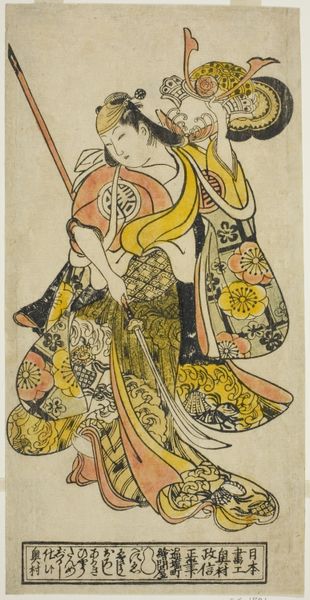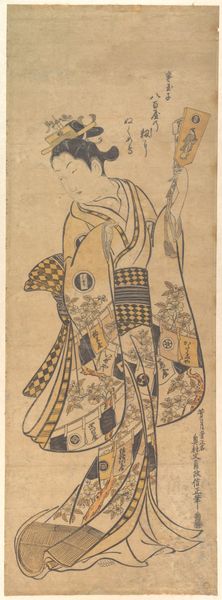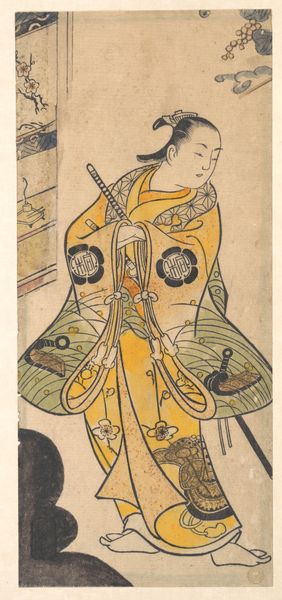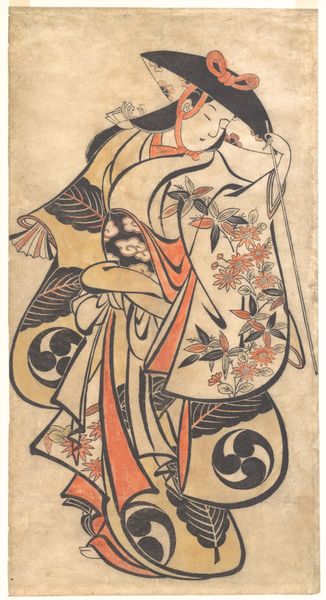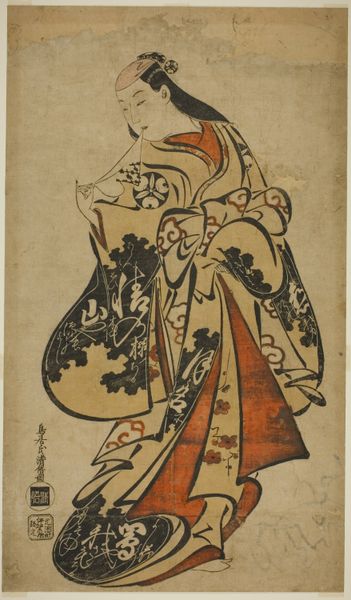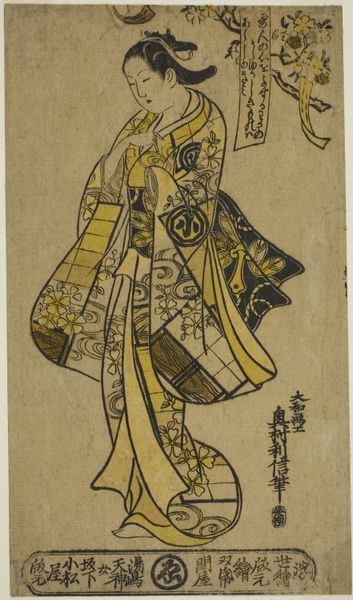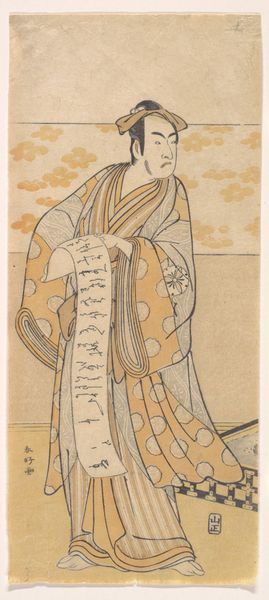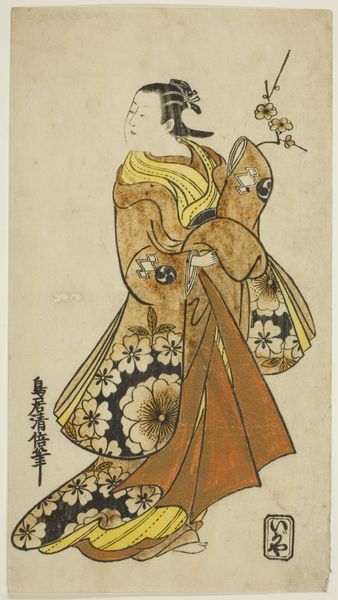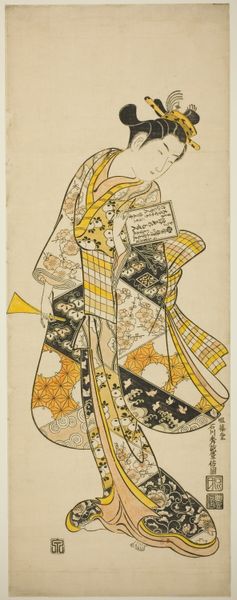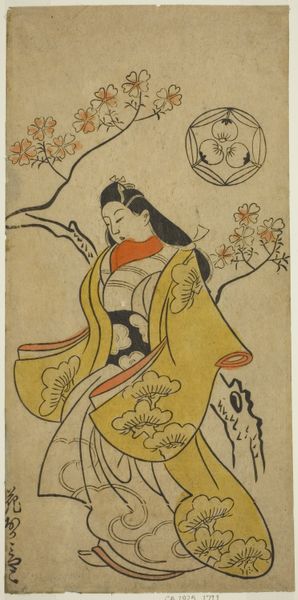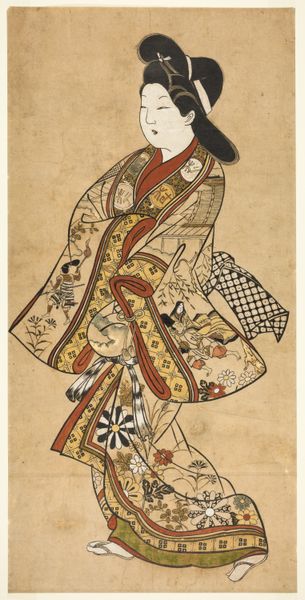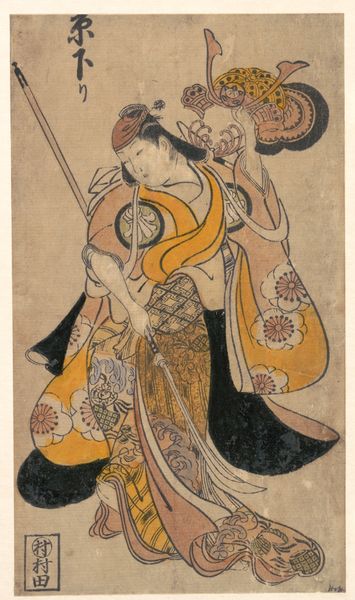
Actor Sanjo Kantaro (1697–1763) as a Woman 1720 - 1740
0:00
0:00
print, woodblock-print
#
portrait
# print
#
asian-art
#
ukiyo-e
#
figuration
#
woodblock-print
Dimensions: H. 12 in. (30.5 cm); W. 5 1/2 in. (14 cm)
Copyright: Public Domain
Curator: Immediately striking is the elegance and restraint within this Japanese woodblock print. The color palette, while limited, is exceptionally refined. Editor: Indeed. Okumura Toshinobu created this work between 1720 and 1740. It’s a portrait of the actor Sanjo Kantaro, who lived from 1697 to 1763, dressed as a woman. Ukiyo-e prints like this one were incredibly popular. Curator: Ukiyo-e, meaning "pictures of the floating world." Aptly named. Notice the flattening of space, achieved through line and pattern. The details in the kimono's decoration, and in the hat, give us much to unpack. How do you read these elements? Editor: Well, these actor prints offered a lens into the Kabuki world, which in Edo-period Japan, functioned as a counter-cultural force of its own. Stars were celebrities. Sanjo Kantaro was a well-known actor. Seeing him portrayed as a woman is also tied to Kabuki traditions; all roles were originally played by men. Curator: Exactly. Semiotically, the image operates through layered coding. The subject, an actor; the costume, drag; the setting, theatrical—everything speaks to performativity. Even the face exhibits a conscious artificiality; consider the brow. Editor: Yes, it is carefully managed visual spectacle, intended for a wide public viewership. Ukiyo-e prints such as this one would have circulated amongst a burgeoning urban audience, who saw themselves reflected back through the glamor of stage culture. The politics of image are subtle here but palpable, demonstrating new attitudes about class and representation. Curator: I agree; the print provides so many rewarding interpretive pathways. A confluence of line, figure, and color resulting in a harmony. Editor: It serves as an echo chamber—history, theater, commerce—in which Japan's cultural shifts take center stage.
Comments
No comments
Be the first to comment and join the conversation on the ultimate creative platform.
